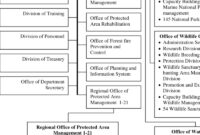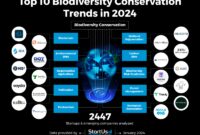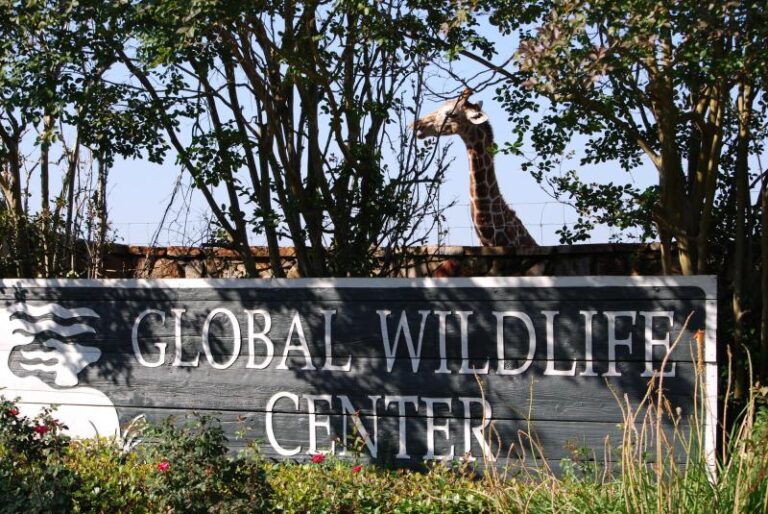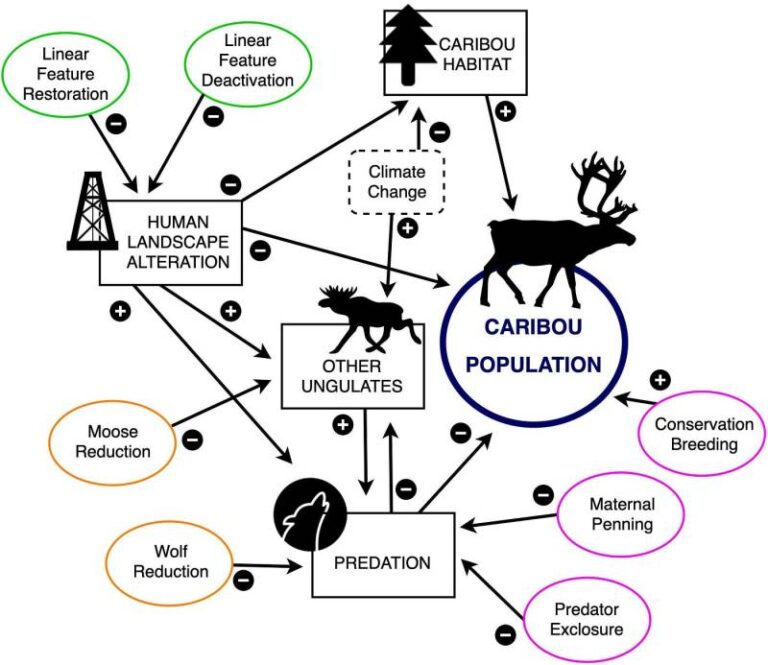Wildlife Conservation Initiatives – The 3rd of March 2024 marks the World Conservation Day with the theme “Connecting People and the Planet: Exploring Digital Information in Context” Injury Prevention”. This theme examines digital innovations and the use of digital conservation technologies and services in wildlife conservation, sustainable management and human-animal coexistence. wild for current and future generations.
This is especially important in an increasingly connected world as a global digital revolution is breaking down the barriers to human-centered digital governance. It also provides equal opportunities for countries with Internet connections and opportunities, such as Ghana, to demonstrate the power of digital technology and services in the sustainable management of their biological resources and addressing human-animal conflicts. In addition, it facilitates the acquisition of accurate and efficient information for decision-making in the conservation and management of species. This is why Ghana, a country full of natural beauty, brings conservation, technology and innovation to the sustainable management of its natural resources.
Wildlife Conservation Initiatives

As we celebrate World Wildlife Day, it is important to acknowledge the role of Global Positioning System (GPS) collars and transmitters in wildlife conservation in Ghana. It is an established fact that conservation efforts have reached an unprecedented level of progress in the use of digital technology. Interestingly, the use of mathematics promotes citizen science. The increasing use and use of mobile devices such as OnX and Gaia and other devices allow the active participation of people in collecting and sharing. This provides an expanded range of data in different geographic areas to include a wide variety of species. In fact, citizen science fosters greater citizen participation in conservation efforts and better awareness and improved response to threats. animal bites The success of some citizen science platforms, for example iNaturalist and eBird, has given rise to special efforts by people to contribute to observational data.
As Tiger Count Grows, India’s Indigenous Demand Land Rights
The new role is to use geolocation data from collars and GPS devices to study animal behavior, based on migration routes and habitat use. unprecedented. Conservationists through these monitoring devices make important decisions to save endangered animals. Researchers and conservationists in Ghana are gradually accepting the importance of digital in wildlife conservation, which is why it is necessary to study the current and future advances in digital.
By attaching collars and GPS transmitters to animals, conservationists can retrieve meaningful information about how different species interact with their environment. This allows conservation plans and priorities to be developed based on species populations and habitats. These devices have contributed to the understanding and protection of endangered species in Protected Areas, Resource Conservation Areas (CREMA) and other protected areas under the protection and management of communities. , community organizations, etc. This allows for gradual progress in the conservation effort towards improving the data. Its use helps identify areas at high risk of poaching, human-wildlife conflict, habitat destruction, and land use development. , climate change, and reduce threats to biodiversity.
Despite the current number of wildlife conservation in Ghana, it is necessary to remember the challenges associated with confidential information, the high cost of monitoring equipment, the number of research equipment related to animal behavior and big data analysis. It seems reasonable that future applications should include more investment in the use of these monitoring devices, exposing a large number of students in high schools and the population to the use of electronic devices, use of microweight machines and applications. of Artificial Intelligence to improve, analyze and predict the best conservation plans for the country. However, this can be achieved by strengthening joint efforts between stakeholders in the wildlife sector, such as the Ministry of Lands and Natural Resources, the Wildlife Division of the Forestry Commission, Metropolitan, Municipal and District Assemblies (MMDA), local people and Non-Governmental Organizations (NGOs) where Resource Conservation () plays an important role.
In this regard, all partners are advised to jointly explore new ways to work with the public, especially the youth, in the pursuit of modern security technologies. and conservation of valuable national resources. Partnerships will be created to stimulate inter-sectoral collaboration to encourage the use of new technologies and digital innovations to manage resource sustainability. of the country. In the rocks near the water, I find penguins. Well arranged, each with a black spot on the belly. They want to know the ship but are not afraid. When I dive into the water, two dozen torpedoes in a row, swing the tail fin, run to the other side of the pool. ” – Carl Safina.
World Tiger Day 2023: Top 3 Wildlife Conservation Scheme By Central Government
Save The Frogs Day aims to raise awareness of these beautiful animals and all they do for us.
SOIL IS THE EARTH OF THE COUNTRY OF THE COUNTRY, THE SOIL FOR DIFFERENT LIVES – A COMBINATION TO STRENGTH IN EARTH.
Serpent eagles are a group of diurnal raptors that specialize in hunting and feeding on snakes. They belong to the genera Circaetus and Spilornis. These eagles are known for their unique feeding habits, powerful abilities, and often have specific adaptations for handling and eating snakes.
Explore the wonderful world of royal butterflies! 🦋 Find out about their 3,000-mile journeys, poison ivy protection, dynamic changes, and secret voyages. Learn about their endangered habitat, temperature-based species studies, and conservation challenges. Join us in protecting these majestic creatures. 🌿 #MonarchButterflies #ConservationEfforts #NatureWonder
Pm Modi Embarks On Thrilling Tiger Safari Adventure
Immerse yourself in the lush jungles of Central and West Africa with us as we explore the wonderful world of gorillas. From their complex social structures to their vital role in the environment, find out why these gentle giants are an important part of our planet. Also, learn about the conservation efforts that have been made to ensure their survival. 🦍 #GorillaConservation #WildlifeAwareness
The black-tailed godwit is a large, long-legged shorebird known for its striking appearance, spectacular journeys of up to 7,000 kilometers, vocal nature, preference for wet areas, conservation status “near threatened” “, and the importance of culture in some places. region, illustrating the beauty and challenges facing bird species.
Rhinos are in dire straits due to habitat loss and poaching caused by misconceptions about their keratin horns, but conservation efforts around the world include communities and young people, success stories and people. Animal tourism, offers hope against the threat of terrorism.
Remarkable information about the hooded grebe sheds light on its unique breeding behavior, striking appearance, and high risk, emphasizing the need concerted conservation efforts to protect this remarkable species.
Conservation With Greenfingers
Join us to make a real difference. Sign up today to become an important volunteer and help us protect Africa’s wildlife and habitats for generations to come.
We educate and inspire the next generation to protect African wildlife and habitats, improve the environment of global citizens through education and collaboration.
It all starts with an idea. Maybe you want to create an educational resource, advocate for conservation, or share your passion for wildlife. Or maybe you have a creative project to share with the world. Regardless, how you tell your story online can make a difference in the success of our social world. We would love to help you achieve this! It’s a collaborative effort to educate winter sports enthusiasts to reduce their impact on wildlife, especially animals, during the challenging winter months.

Winter is a tough season for wildlife, especially ungulates (hoofed mammals like deer, elk, and moose), but you can make things easier for them by keeping 5 simple tips in mind your thoughts throughout the season:
Memo: Bipartisan Majorities Support Federal Conservation Initiatives
This is the reason. Research shows that when animals are stressed and disturbed during the winter months, their energy levels decrease as well as their chances of successfully rearing offspring, resulting in a decrease in livestock and population. Currently, new technologies have made recreational activities in the winter, both fire and non-fire, more popular, contributing to the increase in the number of users in recent years. People also flock to the countryside and winter recreation areas (i.e. uninsulated cold areas) in search of snow alone. unseen. This leads to more encounters between winter sports people and wildlife, and is therefore of greater concern to wildlife. In fact, most people do not want to interfere with wildlife, nor do they want to be responsible (even in part) for the decline of the herd and the death of animals. However, many people do not understand how wildlife affects them or how to avoid or reduce their effects.
In response to this growing conservation challenge, the Winter Wildlands Alliance worked with Colorado Parks and Wildlife, the Theodore Roosevelt Conservation Partnership and the Colorado Mountain Club to develop a new initiative – the Wintering Wildlife Conservation Initiative (WWCI) – to educate There are winter enthusiasts about the road. avoid or reduce impacts to wildlife during sensitive winter months and provide tools to help guide decision making . Even if we plan our ski days and make decisions immediately based on knowledge of the avalanche danger, we can and should also incorporate information to reduce our impact on wildlife in our planning and decision making.
Winter is hard on wild animals: they don’t breed. Instead, they live on the fat reserves they accumulate during the summer and fall. Any intense activity or stress burns extra calories, further depleting these reserves.
Wildlife conservation colleges, masters in wildlife conservation, wildlife conservation news, us wildlife conservation, wildlife conservation masters, wildlife conservation masters programs, global wildlife conservation, grants for wildlife conservation, importance of wildlife conservation, wildlife conservation online degree, marine wildlife conservation, wildlife conservation organisations
- Dog Socialization Care Guide - August 11, 2024
- Best Dog-friendly Vacations - August 11, 2024
- Wildlife Conservation Organizations - August 10, 2024








